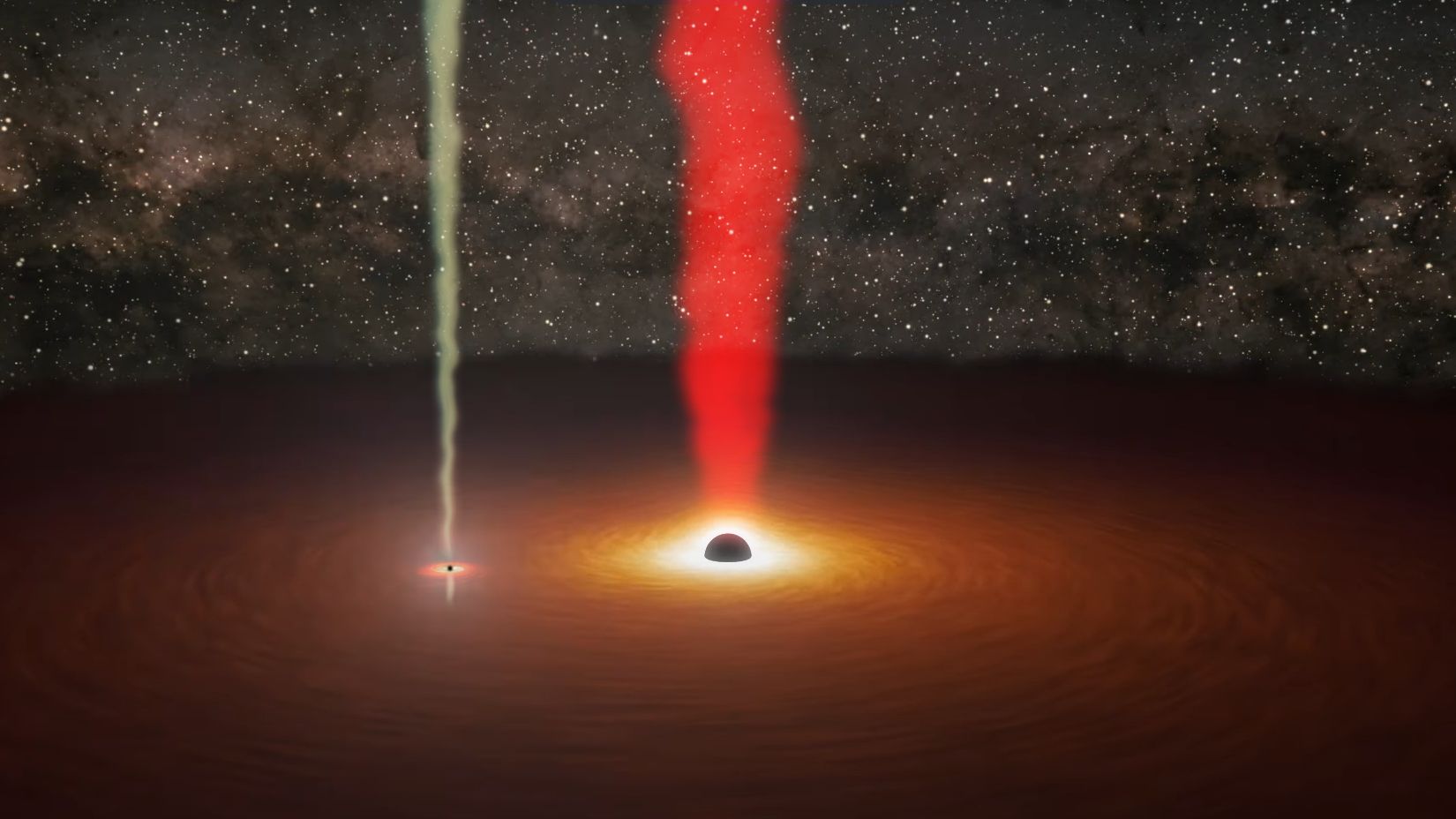The center of this galaxy contains not one, but two supermassive black holes
Follow us on Google News (click on ☆)

Artistic representation of the jets from the two quasars at the heart of the blazar galaxy OJ 287.
Credit: NASA/JPL-Caltech/R. Hurt (IPAC) and M. Mugrauer (AIU Jena)
A quasar represents the extremely active core of a distant galaxy, powered by a supermassive black hole consuming matter at a frenzied pace. Some of this matter is ejected in two powerful opposite jets at speeds close to that of light. When these jets are oriented towards Earth, we observe a blazar, whose brightness is particularly intense.
OJ 287 is one of the closest blazars, visible with large amateur telescopes. Historical observations show that every 12 years, its brightness increases significantly. In 2014, Pauli Pihajoki, a PhD student at the University of Turku, suggested that this variation was caused by the presence of a second, less massive black hole orbiting the primary one. This interaction periodically disrupts the accretion disk, generating outbursts of matter.
In November 2021, NASA's TESS satellite temporarily abandoned its exoplanet search to scrutinize OJ 287. It was joined by the Swift and Fermi telescopes as well as several ground-based observatories. On November 12, TESS observed a flare lasting 12 hours, attributed to a jet produced by the second black hole. This eruption released as much energy as 100 galaxies simultaneously.
This discovery allows for the confirmation of the black holes' masses: 18.35 billion solar masses for the primary and 150 million for the secondary. This observation, the first of its kind, paves the way for the detection of many other similar binary systems. Moreover, these black holes emit low-frequency gravitational waves, detectable by pulsar timing arrays.
These binary systems play a crucial role in the growth of supermassive black holes. During their merger, they generate gravitational waves. Although these waves are too weak to be detected by LIGO, the future LISA space detector could capture these signals. The results of these observations were published on June 11 in The Astrophysical Journal.